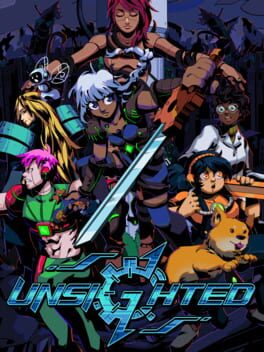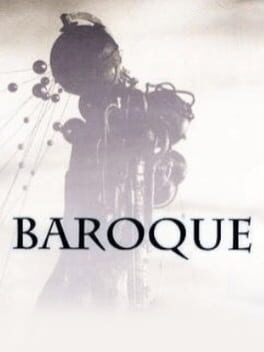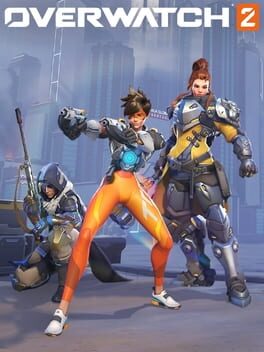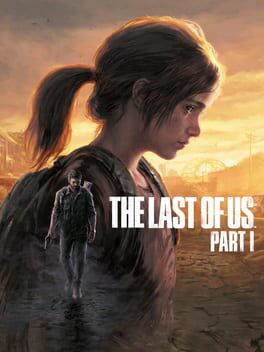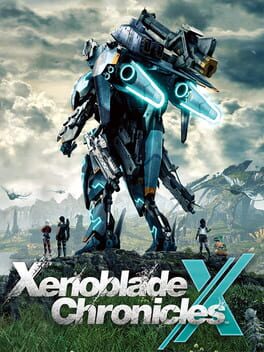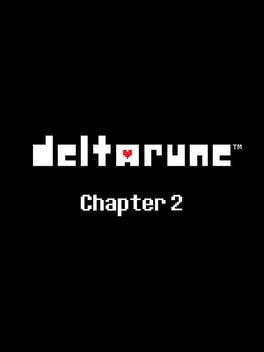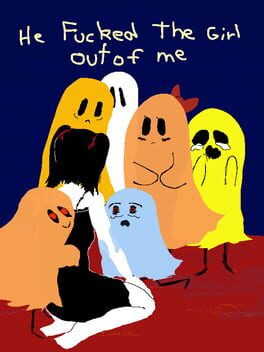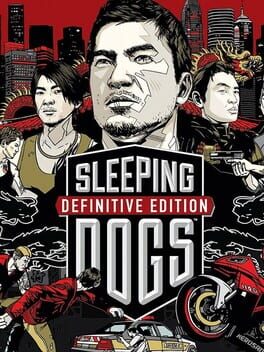joeysobat
155 Reviews liked by joeysobat
Unsighted
2021
Este juego cae en una categoría de título que Ross Scott (de Ross' Game Dungeon) describió como "no están mal, pero...". Básicamente, se trata de títulos aceptable por sí solos, pero no hay nada específico que los haga destacar de un modo significativo. Unsighted es un clon de Zelda relativamente competente que toma notas de todos los juegos de acción-RPG de los últimos años y referencia el pixel art de la última década (espera un estilo a lo Hyper Light Drifter y Titan Souls). Todo eso lo mezcla con una idea interesante que, la mayoría de las veces, se siente que está empujando contra los otros elementos del juego.
El juego tiene Decente escrito a lo largo de su código: tiene píxel art Decente (que no increíble), tiene personajes Decentes (aunque muy derivados de otros ya existentes), y tiene un gameplay Decente (pero no lo bastante interesante como para hacerte querer volver a vivirlo). Si eres completista, acabarás en cuanto consigas el último logro y no volverás jamás. Como otros juegos que pululan el espacio del triple I a día de hoy (junto a Hollow Knight, Dandara y otros juegos), se siente que Pixel Punk sabe agasajar al tipo de público que adora los RPGs y el píxel art, pero no mucho más.
------------------------------------------------
This game falls neatly into a category of titles that Ross Scott kindly described as "not bad, but...". Basically, they are decent enough on their own, but nothing about them makes them stand or pop out in any meanigful way. Unsighted is a moderately competent Zelda-like that takes notes from every successful action-RPG that uses pixel art of the last decade (expect a lot of Titan Souls and Hyper Light Drifter on this), mixes it with a kinda novel idea that most of the times feels like its pushing against other elements of the game, and complements it with a variety of nods and references that amount to nothing.
The game has Decent labeled all over its code: it has Decent (but not incredible) pixel art, it has Decent (but highly derivative of other works) characters and it has Decent (but not interesting enough to make you want to come back more than once of twice) gameplay. If you're a completist, you'll be done as soon as you hit the last achievement and never think of this again. Much like many other games of the current triple I sphere (alongside Hollow Knight, Dandara and similar others), it feels like Pixel Punk knows how to pander to an audience of pixel-art, action-RPG enthusiasts, but not much else.
El juego tiene Decente escrito a lo largo de su código: tiene píxel art Decente (que no increíble), tiene personajes Decentes (aunque muy derivados de otros ya existentes), y tiene un gameplay Decente (pero no lo bastante interesante como para hacerte querer volver a vivirlo). Si eres completista, acabarás en cuanto consigas el último logro y no volverás jamás. Como otros juegos que pululan el espacio del triple I a día de hoy (junto a Hollow Knight, Dandara y otros juegos), se siente que Pixel Punk sabe agasajar al tipo de público que adora los RPGs y el píxel art, pero no mucho más.
------------------------------------------------
This game falls neatly into a category of titles that Ross Scott kindly described as "not bad, but...". Basically, they are decent enough on their own, but nothing about them makes them stand or pop out in any meanigful way. Unsighted is a moderately competent Zelda-like that takes notes from every successful action-RPG that uses pixel art of the last decade (expect a lot of Titan Souls and Hyper Light Drifter on this), mixes it with a kinda novel idea that most of the times feels like its pushing against other elements of the game, and complements it with a variety of nods and references that amount to nothing.
The game has Decent labeled all over its code: it has Decent (but not incredible) pixel art, it has Decent (but highly derivative of other works) characters and it has Decent (but not interesting enough to make you want to come back more than once of twice) gameplay. If you're a completist, you'll be done as soon as you hit the last achievement and never think of this again. Much like many other games of the current triple I sphere (alongside Hollow Knight, Dandara and similar others), it feels like Pixel Punk knows how to pander to an audience of pixel-art, action-RPG enthusiasts, but not much else.
Baroque
1998
Que cursi va a sonar esto pero va: Baroque lo siento como un incentivo para romper el ciclo.
Se le compara de forma automática con otros títulos solo por etiquetas como "Dungeon Crawler" y "Roguelikes".
Digo de forma automática porque me da la sensación de que cuando alguien se encuentra con propuestas de este tipo así de golpe, pues uno siente tal agobio que necesita encasillarlo rapidamente con algo literal o "mecánico" que encuentre minimamente familiar....ponele. De lo contrario se asusta.
Para mi, Baroque tiene mas similitud con juegos como Mr.Drller: ambos titulos comparten la idea de descender hasta lo más profundo (mayor será la profundidad, mayor será la presión), ambos alteran el progreso en cada nuevo camino y en especial, ambos te educan a tomar decisiones inteligentes saliendo de esa linea recta que creías correcta para poder llegar a distintos resultados, por más que los dos aparenten totalmente opuestos terminan demostrando al final la misma fuerza.
El terror radica en la constante manipulación de una ilusión tipica: creer tener el control de la situación. Como las propias pesadillas, nos controlan sin siquiera poder darnos cuenta en el momento.
Baroque me parece el ejemplo perfecto como respuesta a la tipica frasesita de "el terror en un videojuego funciona gracias a la indefensión". Acá no lo estamos, pero eso no signifique que el juego no dé un cague de miedo terrible porque nos enseña por las malas lo necesario que es afrontar los horrores de la torre, aún si nos ponen en los peores estados posibles. Suena exagerado, pero a mi me recuerda mucho al sentimiento de enfrentar una fobia jodida y tarde o temprano tocará superarlo. Después de todo, herramientas las hay pero los metodos y las respuestas las tenés que saber vos mismo. Lo gracioso es que cuando te crees fuerte por haberlo superado, bueno, aparece otro más jodido después y así hasta el final.
La forma de como a Baroque le gusta reirse de tu inocencia y te putea a lo largo del juego genera como una relación rara entre amor y odio, no sé, una especie de rivalidad curiosa para ver quien le gana a quien, te ve como el mismo gusano de siempre que se clona.
Creía que esta era la faceta definitiva hasta que llego a cierta profundidad y pasa lo mas inesperado: el juego te está suplicando ayuda.
A partir de ESE momento, la mirada de Baroque se me cambió por completo y todo lo que me sucedió atrás comenzó a cobrar un sentido totalmente distinto. La rivalidad muere por completo y pareciera que ya a estas alturas el juego quiere que haga todo lo posible para llegar al último piso.
Al retomar el camino como la última y la definitiva, la torre responde con mucha ausencia; ya no hay dialogo, ya no hay sustos, ya no hay manipulación, solo superviviencia hasta la meta. Esa falta de personajes y vida se acerca muchísimo a esa sensación cuando paseas por un lugar público donde por el día pasa mucho movimiento pero a la noche no hay nadie.
Si bien el final indica la idea de una aceptación total de la situación, yo personalmente lo interpreto mucho más como la forma ultra potente que tiene Baroque de demostrar una bellisima gratitud mutua.
Fuera del videojuego yo todavía tengo mi propio ciclo y hasta el dia de hoy no lo supero. Me es irónico como un juego que aparenta ser hostil, terrorífico y ultra pesimista me termina dando más fe en poder cambiar las cosas de una vez por todas, por más dificil que sea el proceso.
Se le compara de forma automática con otros títulos solo por etiquetas como "Dungeon Crawler" y "Roguelikes".
Digo de forma automática porque me da la sensación de que cuando alguien se encuentra con propuestas de este tipo así de golpe, pues uno siente tal agobio que necesita encasillarlo rapidamente con algo literal o "mecánico" que encuentre minimamente familiar....ponele. De lo contrario se asusta.
Para mi, Baroque tiene mas similitud con juegos como Mr.Drller: ambos titulos comparten la idea de descender hasta lo más profundo (mayor será la profundidad, mayor será la presión), ambos alteran el progreso en cada nuevo camino y en especial, ambos te educan a tomar decisiones inteligentes saliendo de esa linea recta que creías correcta para poder llegar a distintos resultados, por más que los dos aparenten totalmente opuestos terminan demostrando al final la misma fuerza.
El terror radica en la constante manipulación de una ilusión tipica: creer tener el control de la situación. Como las propias pesadillas, nos controlan sin siquiera poder darnos cuenta en el momento.
Baroque me parece el ejemplo perfecto como respuesta a la tipica frasesita de "el terror en un videojuego funciona gracias a la indefensión". Acá no lo estamos, pero eso no signifique que el juego no dé un cague de miedo terrible porque nos enseña por las malas lo necesario que es afrontar los horrores de la torre, aún si nos ponen en los peores estados posibles. Suena exagerado, pero a mi me recuerda mucho al sentimiento de enfrentar una fobia jodida y tarde o temprano tocará superarlo. Después de todo, herramientas las hay pero los metodos y las respuestas las tenés que saber vos mismo. Lo gracioso es que cuando te crees fuerte por haberlo superado, bueno, aparece otro más jodido después y así hasta el final.
La forma de como a Baroque le gusta reirse de tu inocencia y te putea a lo largo del juego genera como una relación rara entre amor y odio, no sé, una especie de rivalidad curiosa para ver quien le gana a quien, te ve como el mismo gusano de siempre que se clona.
Creía que esta era la faceta definitiva hasta que llego a cierta profundidad y pasa lo mas inesperado: el juego te está suplicando ayuda.
A partir de ESE momento, la mirada de Baroque se me cambió por completo y todo lo que me sucedió atrás comenzó a cobrar un sentido totalmente distinto. La rivalidad muere por completo y pareciera que ya a estas alturas el juego quiere que haga todo lo posible para llegar al último piso.
Al retomar el camino como la última y la definitiva, la torre responde con mucha ausencia; ya no hay dialogo, ya no hay sustos, ya no hay manipulación, solo superviviencia hasta la meta. Esa falta de personajes y vida se acerca muchísimo a esa sensación cuando paseas por un lugar público donde por el día pasa mucho movimiento pero a la noche no hay nadie.
Si bien el final indica la idea de una aceptación total de la situación, yo personalmente lo interpreto mucho más como la forma ultra potente que tiene Baroque de demostrar una bellisima gratitud mutua.
Fuera del videojuego yo todavía tengo mi propio ciclo y hasta el dia de hoy no lo supero. Me es irónico como un juego que aparenta ser hostil, terrorífico y ultra pesimista me termina dando más fe en poder cambiar las cosas de una vez por todas, por más dificil que sea el proceso.
Butterfly Soup 2
2022
Butterfly Soup 2
2022
Butterfly Soup became a symbol upon its ending and the popularity/status it gained along the following 5 years. If the first one was about a fantasy created within a group of friends so strong that it was capable of ignoring the surrounding noise, Butterfly Soup 2 is the reality faced after the magical days of uncertainty materialized. Now the conflicts permeate even those reunions with the friends that not long ago could block the entire world. Fantastic and real exchange roles.
It’s actually interesting to use a direct sequel to question the fantastical symbolic status already settled and work some of the not so happy parts that come after it. And it’s not that the kids suddenly are obstructed by the world that confronts them, it's that the conflicts are inside them. It’s not that Diya’s mother doesn’t understand her or that Noelle’s parents force her to study Chinese, it’s that Diya wants to be capable of talking with her mother and Noelle wants to connect with her roots for reasons she didn’t notice before.
It’s a process of understanding that finding the place where you can finally form your true self also means that you won’t fit all molds, even the ones you desire. It’s learning to live with those contradictions and begin working your way through them. In the end, these kids will grow up and will always be themselves, but they’ll still have to face their inner worries on their way. The group stops being just a place to forget about the world and matures into a space where to deal with their inner conflicts in company.
It’s actually interesting to use a direct sequel to question the fantastical symbolic status already settled and work some of the not so happy parts that come after it. And it’s not that the kids suddenly are obstructed by the world that confronts them, it's that the conflicts are inside them. It’s not that Diya’s mother doesn’t understand her or that Noelle’s parents force her to study Chinese, it’s that Diya wants to be capable of talking with her mother and Noelle wants to connect with her roots for reasons she didn’t notice before.
It’s a process of understanding that finding the place where you can finally form your true self also means that you won’t fit all molds, even the ones you desire. It’s learning to live with those contradictions and begin working your way through them. In the end, these kids will grow up and will always be themselves, but they’ll still have to face their inner worries on their way. The group stops being just a place to forget about the world and matures into a space where to deal with their inner conflicts in company.
Butterfly Soup 2
2022
Briana Lei and her first Butterfly Soup are part of the wave of "video games that do not love our time, but the people who live in it"
It is a very difficult pill for me to swallow because this year I was expecting a lot of games that have not gone beyond remarkable, but I find it hard to believe that the one I like the least is a surprise game by Briana Lei, but of course, in hindsight, it was already clear that it would be like this. The first BP articulated a teenage fantasy where the only normative thing was its VN format and semi-anime Tumblr visuals. It was an incisive political story that almost openly framed the new generations raised in the 2000s-both in the good and in the bad-and how they lived a full adolescence in our modern turbo-capitalist world, whose foundations have been built with such eagerness that it seems There will be no room for drastic sociopolitical change that maintains and ensures equity for people. Demonstrations against homosexual marriage, situations where multiculturalism, disappointment and paternalism towards a generation trapped in an unequal system... And in the center a group of girls of varied ethnicity trying to live. everything else needs a solution, but it's in the background, because in the chaos, these girls have the right to live, we all do.
It's perfect, no need for a sequel. The important thing was the girls, yes, but their situation in the world, not so much the laughing breezy dialogues.
BS2 has a lot of heart, but it succumbs to the "improve and expand" preconceptions and thereby becomes something worse than a compliant sequel: A deal.
Expand, continuing a story, and improve by emphasizing personalities to moments of exaggeration.
You play, I tuck you in. You know this, take more of it.
It tries to pay REAL attention, and point out the social causes that didn't have as much depth in the first game as
The exploration of gender and sexuality, racism, the complexity of family relationships... But the truth is that all this was already in the first game, it was not underlined, but its presence crossed the entire work like a lightning bolt. It was not heard clearly, but it had an impact after the fact.
The pandemic has changed the world for the worse if possible for some, we go two steps forward and one step back. It's still a step forward, but still.
We can't let social and moral causes become fictional genres, not even Briana Lei, because this is what has happened in BS2.
I wanted to write more things, but it's getting difficult for me.
Bye bye, Butterlfy
It is a very difficult pill for me to swallow because this year I was expecting a lot of games that have not gone beyond remarkable, but I find it hard to believe that the one I like the least is a surprise game by Briana Lei, but of course, in hindsight, it was already clear that it would be like this. The first BP articulated a teenage fantasy where the only normative thing was its VN format and semi-anime Tumblr visuals. It was an incisive political story that almost openly framed the new generations raised in the 2000s-both in the good and in the bad-and how they lived a full adolescence in our modern turbo-capitalist world, whose foundations have been built with such eagerness that it seems There will be no room for drastic sociopolitical change that maintains and ensures equity for people. Demonstrations against homosexual marriage, situations where multiculturalism, disappointment and paternalism towards a generation trapped in an unequal system... And in the center a group of girls of varied ethnicity trying to live. everything else needs a solution, but it's in the background, because in the chaos, these girls have the right to live, we all do.
It's perfect, no need for a sequel. The important thing was the girls, yes, but their situation in the world, not so much the laughing breezy dialogues.
BS2 has a lot of heart, but it succumbs to the "improve and expand" preconceptions and thereby becomes something worse than a compliant sequel: A deal.
Expand, continuing a story, and improve by emphasizing personalities to moments of exaggeration.
You play, I tuck you in. You know this, take more of it.
It tries to pay REAL attention, and point out the social causes that didn't have as much depth in the first game as
The exploration of gender and sexuality, racism, the complexity of family relationships... But the truth is that all this was already in the first game, it was not underlined, but its presence crossed the entire work like a lightning bolt. It was not heard clearly, but it had an impact after the fact.
The pandemic has changed the world for the worse if possible for some, we go two steps forward and one step back. It's still a step forward, but still.
We can't let social and moral causes become fictional genres, not even Briana Lei, because this is what has happened in BS2.
I wanted to write more things, but it's getting difficult for me.
Bye bye, Butterlfy
Signalis
2022
Better remake than several of the contemporaries, basically because it is a remix that assimilates the false -or more widespread- history of "survival Horror" (the genre names are a bit silly) that the magazines sold us here in the West batter than the last "new" games of the last few years. Think of essential pillar works of the horror aesthetic in gaming And you probably don't think of Laplace No Ma or Twilight Syndrome, god, names like Sweet Home, Clock Tower and contemporaries are probably starting to sound, but surely most say Alone in the Dark and already jumps into the golden era of Resident Evil, Silent Hill, White Day, Project Zero and all that.
It is natural, understandable due to the lack of a consistent canon in gaming, incapable of being properly created even in the puberty of a medium that is forced to a maturity that it could already reach (in fact it has already touched it).
Advertising and the Ludic factor have screwed up video games in many ways, but the worst is that accidental and unavoidable ignorance due to the lack I mentioned of a properly documented historical canon leads to constant redundancy in design planning and game direction. many "new" games. And it's not that I care too much about this lack of originality, this redundancy, nah, there are pre-rendered games with landscape Screen Orientation where the only thing you do is walk that take my breath away more than any "mechanical revolution" a-la Mario64. I don't think that quality is measured by originality, besides, bro, literally less than 50% of the mechanics that exist or were today are used expressively, almost everything is immediate gratification, fast food style.
We need more Historians in gaming, ASAP.
The adorable and beautiful thing about experiencing first works and recognizing influences on new authors is lost when they approach aesthetics with structures as closed as "classic survival horror", which always seems to result in the same sagas, with the same redundancy as I write these thoughts.
Well this brings us to Signalis. I recently came across a video on Youtube titled: SIGNALIS THE NEW FACE OF MODERN SURVIVAL HORROR
or something like that.
Modern? What ? in what sense? It is a remix of the supposed pillars of survival horror; RE structure, evocative images a la Silent Hill, hand holding sections in the first person, like horror graphic adventures or something from the golden era like White day. A Sci fi setting.
Martian Gothic.
DeadSpace.
Bro. Perhaps the only modern thing is the second round that works as a continuation and begins to suggest ideas about cycles and emotional attachment. But even in that I recognize other works.
It's not a bad thing as such. Remake and give your take, your version. I prefer it a thousand times to any remake of Vicarious Visions or BluePoint (May Arceus punish the shareholder meetings as they deserve) but Regardless of the intrinsic quality of SIGNALIS, you can see where it comes from and how little it can actually offer beyond entertaining hours: the product.
It is natural, understandable due to the lack of a consistent canon in gaming, incapable of being properly created even in the puberty of a medium that is forced to a maturity that it could already reach (in fact it has already touched it).
Advertising and the Ludic factor have screwed up video games in many ways, but the worst is that accidental and unavoidable ignorance due to the lack I mentioned of a properly documented historical canon leads to constant redundancy in design planning and game direction. many "new" games. And it's not that I care too much about this lack of originality, this redundancy, nah, there are pre-rendered games with landscape Screen Orientation where the only thing you do is walk that take my breath away more than any "mechanical revolution" a-la Mario64. I don't think that quality is measured by originality, besides, bro, literally less than 50% of the mechanics that exist or were today are used expressively, almost everything is immediate gratification, fast food style.
We need more Historians in gaming, ASAP.
The adorable and beautiful thing about experiencing first works and recognizing influences on new authors is lost when they approach aesthetics with structures as closed as "classic survival horror", which always seems to result in the same sagas, with the same redundancy as I write these thoughts.
Well this brings us to Signalis. I recently came across a video on Youtube titled: SIGNALIS THE NEW FACE OF MODERN SURVIVAL HORROR
or something like that.
Modern? What ? in what sense? It is a remix of the supposed pillars of survival horror; RE structure, evocative images a la Silent Hill, hand holding sections in the first person, like horror graphic adventures or something from the golden era like White day. A Sci fi setting.
Martian Gothic.
DeadSpace.
Bro. Perhaps the only modern thing is the second round that works as a continuation and begins to suggest ideas about cycles and emotional attachment. But even in that I recognize other works.
It's not a bad thing as such. Remake and give your take, your version. I prefer it a thousand times to any remake of Vicarious Visions or BluePoint (May Arceus punish the shareholder meetings as they deserve) but Regardless of the intrinsic quality of SIGNALIS, you can see where it comes from and how little it can actually offer beyond entertaining hours: the product.
Overwatch 2
2022
Si queréis saber lo que pienso de este juego, mirad la reseña que le he dedicado al original, porque me niego a participar en esta charada de reedición.
----------------------------------------
If you want to know what I think of this game, check out my review of the original one, because I refuse to participate in this remaster nonsense.
----------------------------------------
If you want to know what I think of this game, check out my review of the original one, because I refuse to participate in this remaster nonsense.
Those who see art as a shortcut to prestige have a very distorted idea of what is "prestigious" - Look Kojima, creating spiritual connections through eschatology, total genius -, And few of this horrible ilk exist like Neil druckmann or conrad roset. Guys who use the medium of video games as a platform to satisfy their hunger for prominence and recognition. and incidentally, along the way, dividing in a problematic way the reception and conception of "arthouse" and pop games
I'm not going to blame them for Little Nightmares being read as an empty and morbid trip, because before that there was Playdead with his Limbo.
Neither of the obsession with the tone and fixation with photorealism without a plastic sense more typical than seeing the pores of Nathan Drake's skin, but, God, how I would like a timeline in which Roset and Druckmann are considered the worst in a way unanimous. Because they may not be the worst in general in the horror pile, but their popularity exposes the sad reality that some are interested in video games being validated by those who do not appreciate them in all their aspects, and those who need them to carry an HBO series cosplay or Milanese exhibition box
____________________
the idea of how necessary any author was -beyond programmers- in videogames came to me for the first time playing Dragon Quarter "the shape of this game does not seem to be the product of chance or trends" said little Ardu at one time where he assumed that experimentation was the standard and the methodology to follow, the correct choice. Poor ignorant little Ardu.
In 2013 Little Ardu also said: "In the same year as Attack of the friday monsters, Drakengard 3, TW101, Proteus and Resogun... There is The Last of Us, this game that has enchanted me for its solidity and surprising humanity ( little Ardu didn't see that coming) but it's also the pinnacle of the formally conservative tv prestige show wannabe game type, which seems to be the way forward for pop games. mmmm maybe it's not that bad either? I mean it has overlapped many games that I consider better, but that always happens to me haha if one day justice will be done, but meanwhile, if the AAA are like that, maybe we will advance something "
Poor ignorant little Ardu.
I'm not going to blame them for Little Nightmares being read as an empty and morbid trip, because before that there was Playdead with his Limbo.
Neither of the obsession with the tone and fixation with photorealism without a plastic sense more typical than seeing the pores of Nathan Drake's skin, but, God, how I would like a timeline in which Roset and Druckmann are considered the worst in a way unanimous. Because they may not be the worst in general in the horror pile, but their popularity exposes the sad reality that some are interested in video games being validated by those who do not appreciate them in all their aspects, and those who need them to carry an HBO series cosplay or Milanese exhibition box
____________________
the idea of how necessary any author was -beyond programmers- in videogames came to me for the first time playing Dragon Quarter "the shape of this game does not seem to be the product of chance or trends" said little Ardu at one time where he assumed that experimentation was the standard and the methodology to follow, the correct choice. Poor ignorant little Ardu.
In 2013 Little Ardu also said: "In the same year as Attack of the friday monsters, Drakengard 3, TW101, Proteus and Resogun... There is The Last of Us, this game that has enchanted me for its solidity and surprising humanity ( little Ardu didn't see that coming) but it's also the pinnacle of the formally conservative tv prestige show wannabe game type, which seems to be the way forward for pop games. mmmm maybe it's not that bad either? I mean it has overlapped many games that I consider better, but that always happens to me haha if one day justice will be done, but meanwhile, if the AAA are like that, maybe we will advance something "
Poor ignorant little Ardu.
Deltarune: Chapter 2
2021
Ridge Racer Type 4
1998
Can you feel the heat?
When the tires kiss the street
Move into the beat
Ever since I learned about occlusion culling, a technique deftly handled by Naughty Dog with their first PlayStation 1 title, Crash Bandicoot, my appreciation for the more graphically stellar titles for the system was granted a new shade. It helped offer me a frame of reference (granted, of one of the more extreme use cases) for the necessity to obscure unneeded geometry to save what precious few resources the console could afford - as well as giving me something to mull over whenever I play a 3D PS1 game that looks suspiciously good. Much akin to Crash Bandicoot, racing games benefit from what is essentially a densely curated linear track. With limited camera movement, every attainable viewing angle can be accurately poured over by the designers, letting them carefully weigh up exactly how much they can get away with at every meter of game space. This is very apparent in visually stunning racing titles like Wipeout 3, Colin McRae Rally 2.0, and Need for Speed: High Stakes; their tracks are glutted with turns, verticality and obstacles that exist to obscure as much model pop-in as possible, and offer a new piece of visual stimuli at every turn. This has a knock-on effect for how these tracks are actually driven on, too. Track designers are by necessity discouraged from long straightaways where the world noticeably phases into existence, and instead ensure that the player has very little if any downtime from cornering, maintaining a thrilling tempo that only stops when the chequered flag is waved. I say all this, because I really do miss the era where racing games were these hardware-defying explosions of style and skill, with enough big-money backing to allow the designers to let their perfectionism and neuroses get tangled in the engine’s crankshaft. I can only go in a straight line down a massive realistic unreal engine map for so long.
Anyway. Ridge Racer Type 4 is a Swiss watch. One of very, very few games I’d describe as “meticulous”. Every one of its moving parts serves a key purpose in its grand design. Its mechanisms are the result of painstaking consideration for the most minute details. Built to last, and never lose its sheen. The only game my dad likes (real). It all just moves & breathes with this air of confidence and romance, exemplified by the way the penultimate setpiece is the final lap taking place at the exact turn of the millennium - a genuinely affecting gesture to barrel through doubt and seize your future by any means.
One thing I’m particularly taken by is the overall stylistic presentation of Type 4. Among the first things you see upon loading it up are the game’s signature tail/headlight afterglows leaving trails across the screen. The preamble at the start of this review was for no reason other than the fact that R4 actualises the PS1. Its environments use every trick in the book with a healthy serving of incredible models & baked-in textures to make the world feel rich beyond the scope of the road. The game’s UI alone is worth studying for its consistent use of very few colours, empty-space and minimalist decoration (every game needs a "PLEASE" in the corner at all times). In establishing a universe that seemingly exists solely for the purpose of racing fictional cars around the fictional Ridge City, the developers at Namco have populated the series with a mountain of logos, icons, banners, signs, patterns, manufacturers, liveries and colour palettes. They work to establish the curves, hills and tunnels as very real places with a history all their own. How did Wonderhill get its name? Why is it called Shooting Hoops? Where are these places in Ridge City and how do they fit into the Ridge Racer universe?
Look at the Helter Skelter track’s logo, for instance. One of the things I enjoy about this logo is its deceptively simple construction that results in a complex visual illusion of sorts. Essentially, the structure is a series of circles that reduce in size from top to bottom. The circles do not change shape in the slightest, only in scale, and by removing their intersections and filling in some minor spaces to complete the shape, is this illusion achieved. It harkens to the track’s multi-levelled nature, conveying a sense of movement as you rapidly weave through overpasses and underground tunnels w/ the ferocity of a hurricane.
The whole game is like this. A veritable archive of mindful audio, visual and game design, of weapons-grade artistic talent. Beyond aspirational and genuinely medium affirming.
When the tires kiss the street
Move into the beat
Ever since I learned about occlusion culling, a technique deftly handled by Naughty Dog with their first PlayStation 1 title, Crash Bandicoot, my appreciation for the more graphically stellar titles for the system was granted a new shade. It helped offer me a frame of reference (granted, of one of the more extreme use cases) for the necessity to obscure unneeded geometry to save what precious few resources the console could afford - as well as giving me something to mull over whenever I play a 3D PS1 game that looks suspiciously good. Much akin to Crash Bandicoot, racing games benefit from what is essentially a densely curated linear track. With limited camera movement, every attainable viewing angle can be accurately poured over by the designers, letting them carefully weigh up exactly how much they can get away with at every meter of game space. This is very apparent in visually stunning racing titles like Wipeout 3, Colin McRae Rally 2.0, and Need for Speed: High Stakes; their tracks are glutted with turns, verticality and obstacles that exist to obscure as much model pop-in as possible, and offer a new piece of visual stimuli at every turn. This has a knock-on effect for how these tracks are actually driven on, too. Track designers are by necessity discouraged from long straightaways where the world noticeably phases into existence, and instead ensure that the player has very little if any downtime from cornering, maintaining a thrilling tempo that only stops when the chequered flag is waved. I say all this, because I really do miss the era where racing games were these hardware-defying explosions of style and skill, with enough big-money backing to allow the designers to let their perfectionism and neuroses get tangled in the engine’s crankshaft. I can only go in a straight line down a massive realistic unreal engine map for so long.
Anyway. Ridge Racer Type 4 is a Swiss watch. One of very, very few games I’d describe as “meticulous”. Every one of its moving parts serves a key purpose in its grand design. Its mechanisms are the result of painstaking consideration for the most minute details. Built to last, and never lose its sheen. The only game my dad likes (real). It all just moves & breathes with this air of confidence and romance, exemplified by the way the penultimate setpiece is the final lap taking place at the exact turn of the millennium - a genuinely affecting gesture to barrel through doubt and seize your future by any means.
One thing I’m particularly taken by is the overall stylistic presentation of Type 4. Among the first things you see upon loading it up are the game’s signature tail/headlight afterglows leaving trails across the screen. The preamble at the start of this review was for no reason other than the fact that R4 actualises the PS1. Its environments use every trick in the book with a healthy serving of incredible models & baked-in textures to make the world feel rich beyond the scope of the road. The game’s UI alone is worth studying for its consistent use of very few colours, empty-space and minimalist decoration (every game needs a "PLEASE" in the corner at all times). In establishing a universe that seemingly exists solely for the purpose of racing fictional cars around the fictional Ridge City, the developers at Namco have populated the series with a mountain of logos, icons, banners, signs, patterns, manufacturers, liveries and colour palettes. They work to establish the curves, hills and tunnels as very real places with a history all their own. How did Wonderhill get its name? Why is it called Shooting Hoops? Where are these places in Ridge City and how do they fit into the Ridge Racer universe?
Look at the Helter Skelter track’s logo, for instance. One of the things I enjoy about this logo is its deceptively simple construction that results in a complex visual illusion of sorts. Essentially, the structure is a series of circles that reduce in size from top to bottom. The circles do not change shape in the slightest, only in scale, and by removing their intersections and filling in some minor spaces to complete the shape, is this illusion achieved. It harkens to the track’s multi-levelled nature, conveying a sense of movement as you rapidly weave through overpasses and underground tunnels w/ the ferocity of a hurricane.
The whole game is like this. A veritable archive of mindful audio, visual and game design, of weapons-grade artistic talent. Beyond aspirational and genuinely medium affirming.
Originally posted here: https://www.instagram.com/p/Cfso_vnA-FE/
An autobiographical story of a transgender woman and her traumatic experiences with sex work. Personal and intense in its prose, abstract in its presentation. Defamiliarization and impersonation as representation of the coping mechanism, with a melancholic, surreal sea of consciousness bringing life to fuzzy, drowned memories. And a fitting pixel-art aesthetic - not just a stylistic choice born from lack of resources but the representation of the raw feelings of an innocent, hurt mind
An autobiographical story of a transgender woman and her traumatic experiences with sex work. Personal and intense in its prose, abstract in its presentation. Defamiliarization and impersonation as representation of the coping mechanism, with a melancholic, surreal sea of consciousness bringing life to fuzzy, drowned memories. And a fitting pixel-art aesthetic - not just a stylistic choice born from lack of resources but the representation of the raw feelings of an innocent, hurt mind
drunk thoughts:
- our spectacle is entirely metatextual
-The game is a fail at the beginning. the drama adopts the triads as an aesthetic element rather than as a real device for conflict. Any protocol or issue related to the triads is taken more from the collective imagination, more from and closer to the mafias of Europe than to those of Asia.
Of course, in the end, the bad guy was the Occidental.
-Less vulgar (vulgar images and spaces are good) than it appears and more organized (poorly) than it should. Any moment is approached from the same common ground as all modern action games with open-world structures: (efficient) fights and (horrible) shootouts here, chases there, on foot or in vehicles. Follow the line on the minimap, don't get lost.
and bro, nothing really matters when no set-piece takes advantage of the architecture. Why Hong Kong? I play because I'm supposed to be Hong Kong, but until I raise the camera slightly I can't tell these digital streets apart from others I've already seen. The camera does not emphasize anything or let me take a look on my own, it is hermetic and protocol business.
And how can it be? There is pampering here. Yes there is architectural mime (I guess)
-the True -True Crime Hong Kong: the city is a zombie set where the little life of space begins and ends with its references to the cinema. God, what a pain to see PTU reduced to a couple of fights and encryption minigames
Anyone who has seen Johnnie To knows that the monster, the titan and the biggest character in HK cinema is the city itself.
but here is just a wallpaper.
- our spectacle is entirely metatextual
-The game is a fail at the beginning. the drama adopts the triads as an aesthetic element rather than as a real device for conflict. Any protocol or issue related to the triads is taken more from the collective imagination, more from and closer to the mafias of Europe than to those of Asia.
Of course, in the end, the bad guy was the Occidental.
-Less vulgar (vulgar images and spaces are good) than it appears and more organized (poorly) than it should. Any moment is approached from the same common ground as all modern action games with open-world structures: (efficient) fights and (horrible) shootouts here, chases there, on foot or in vehicles. Follow the line on the minimap, don't get lost.
and bro, nothing really matters when no set-piece takes advantage of the architecture. Why Hong Kong? I play because I'm supposed to be Hong Kong, but until I raise the camera slightly I can't tell these digital streets apart from others I've already seen. The camera does not emphasize anything or let me take a look on my own, it is hermetic and protocol business.
And how can it be? There is pampering here. Yes there is architectural mime (I guess)
-the True -True Crime Hong Kong: the city is a zombie set where the little life of space begins and ends with its references to the cinema. God, what a pain to see PTU reduced to a couple of fights and encryption minigames
Anyone who has seen Johnnie To knows that the monster, the titan and the biggest character in HK cinema is the city itself.
but here is just a wallpaper.
